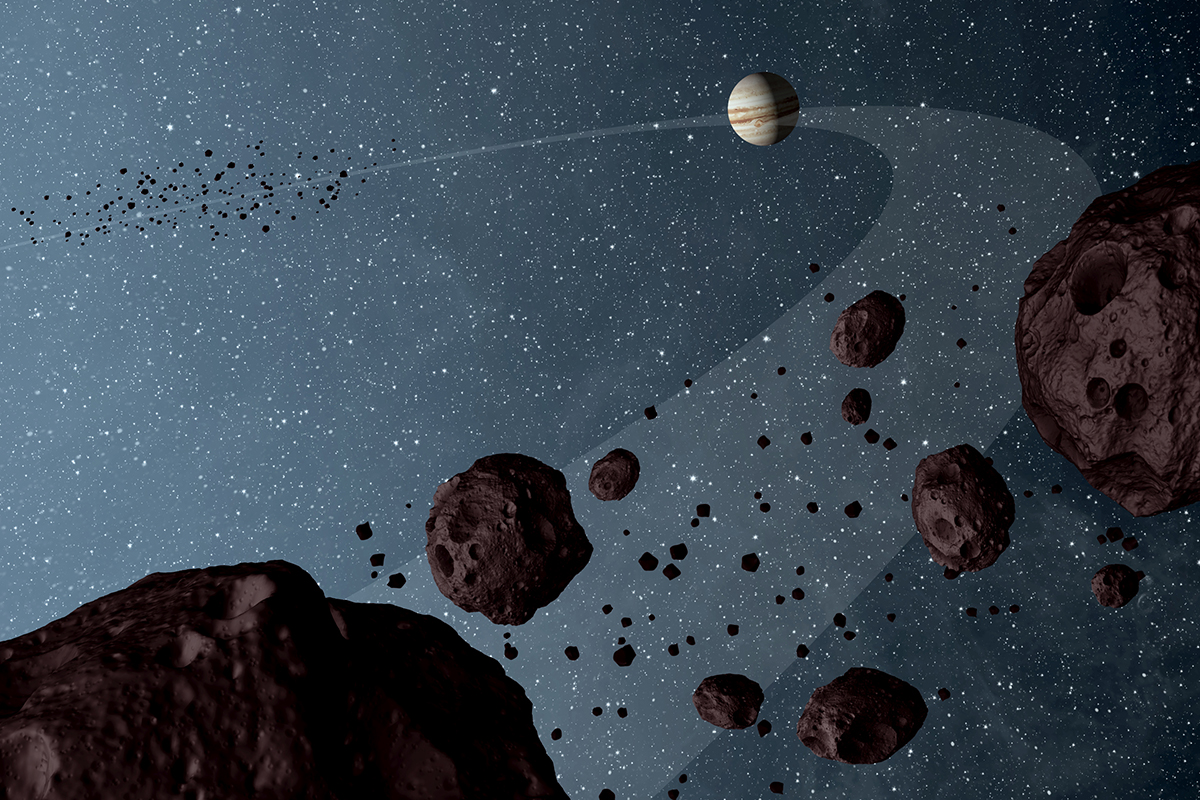Main belt asteroid Dinkinesh has its own moon, NASA Lucy mission scientists have learned.
NASA’s Lucy spacecraft has flown by its first asteroid and found not one asteroid, but two.
The first images captured by the spacecraft show that small main belt asteroid Dinkinesh is actually a binary pair.
This means the asteroid is actually two asteroids, a smaller body in orbit around the larger body.
The Lucy spacecraft’s Long-Range Reconnaissance Imager captured images of asteroid Dinkinesh during a flyby this week.
The images of Dinkinesh were taken at 16:55 UTC on 1 November 2023, within a minute of Lucy’s closest approach to the asteroid at a distance of about 430km.
In the weeks leading up to the Dinkinesh flyby, Lucy scientists had observed changes in the asteroid’s brightness, leading them to suspect this might be caused by a second asteroid in orbit around the larger body.
The Lucy images confirm that Dinkinesh is indeed a close binary. The asteroid has a moon.
Initial data suggests the larger body is about 790m at its widest point, while the smaller is about 220m.
NASA’s Lucy mission explained

NASA’s Lucy mission launched on 16 October 2021 on a 12-year journey to study Jupiter’s Trojan asteroids.
The Trojan asteroids are large space rocks, remnants of the formation of the Solar System, that share Jupiter’s orbit, and are positioned ahead of or behind the planet.
The Lucy mission is due to arrive at the Trojan asteroids in August 2027, when it will make flybys of the bodies.

Lucy’s Dinkinesh encounter
The Lucy spacecraft flew by asteroid Dinkinesh as part of an in-flight test of its scientific capabilities.
The mission team used the encounter to test the system that enables Lucy to track an asteroid autonomously as it whizzes by at 10,000 mph.
“This is an awesome series of images. They indicate that the terminal tracking system worked as intended, even when the universe presented us with a more difficult target than we expected,” says Tom Kennedy, guidance and navigation engineer at Lockheed Martin in Littleton, Colorado.

“It’s one thing to simulate, test, and practice. It’s another thing entirely to see it actually happen.”
Yet while this was primarily a test of engineering, unsurprisingly the close encounter of the asteroid has yielded many scientific insights.
“We knew this was going to be the smallest main belt asteroid ever seen up close,” says Keith Noll, Lucy project scientist from NASA’s Goddard Space Flight Center in Greenbelt, Maryland.
“The fact that it is two makes it even more exciting. In some ways these asteroids look similar to the near-Earth asteroid binary Didymos and Dimorphos that DART saw, but there are some really interesting differences that we will be investigating.”

What next for Lucy?
It will take up to a week for the team to downlink the remainder of the Lucy Dinkinesh asteroid encounter data from the spacecraft.
The team will use this to evaluate the spacecraft’s behaviour during the encounter and to prepare for the next flyby, which will be main belt asteroid Donaldjohanson in 2025.
Lucy will then prepare for its encounter of the Jupiter Trojan asteroids, starting in 2027.